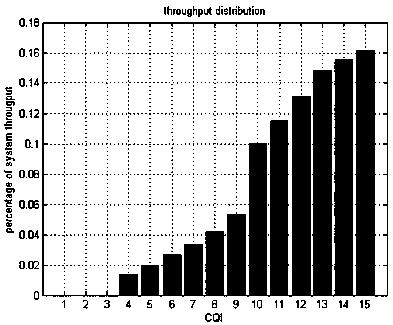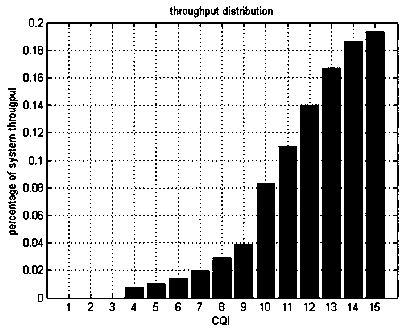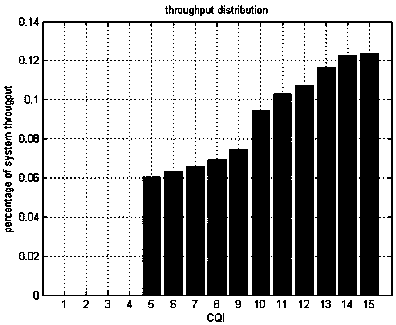A Proportional Fair Scheduling Method for LTE
A proportionally fair scheduling and power ratio technology, applied in the field of mobile communications, can solve the problems of inability to distinguish services of different levels of services and throughput factor weights, changes, etc., to ensure the service quality of services, improve performance, and overcome weight imbalance. Effect
- Summary
- Abstract
- Description
- Claims
- Application Information
AI Technical Summary
Problems solved by technology
Method used
Image
Examples
Embodiment
[0047] The concrete calculation of embodiment is as follows:
[0048] Non-GBR users:
[0049]
[0050] In the formula, e is a mathematical constant, T Non-GBR_noschedIndicates the non-GBR user data available in the RLC (Radio Link Control layer protocol) cache is not scheduled time statistics, that is, the scheduling delay. It is a self-adjusting factor, and during specific implementation, those skilled in the art can set it to adjust the weight of the scheduling delay in the scheduling algorithm according to the actual application scenario, so as to fine-tune the scheduling weight of the user. The PDB indicates the delay requirement related to the user. During specific implementation, this value can be configured differently according to the priority of each user, and at the same time, it plays a role in normalizing the scheduling delay.
[0051] GBR users:
[0052]
[0053] In the formula, e is a mathematical constant, and λ represents a self-adjusting factor to ad...
PUM
 Login to View More
Login to View More Abstract
Description
Claims
Application Information
 Login to View More
Login to View More - R&D
- Intellectual Property
- Life Sciences
- Materials
- Tech Scout
- Unparalleled Data Quality
- Higher Quality Content
- 60% Fewer Hallucinations
Browse by: Latest US Patents, China's latest patents, Technical Efficacy Thesaurus, Application Domain, Technology Topic, Popular Technical Reports.
© 2025 PatSnap. All rights reserved.Legal|Privacy policy|Modern Slavery Act Transparency Statement|Sitemap|About US| Contact US: help@patsnap.com



